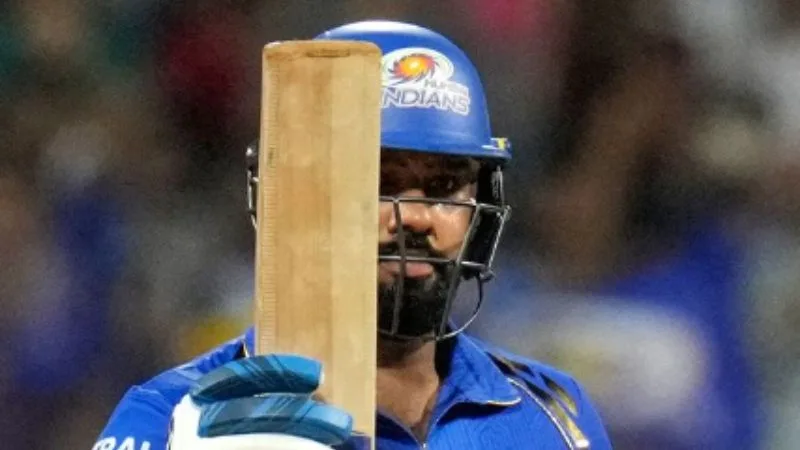In the Sunday El Classico between Mumbai Indians and the Chennai Super Kings, the Ruturaj Gaikwad-led CSK won the match by 20 runs. The men in yellow scored 206 in their 20 overs with crucial half century from the skipper and a fantastic cameo by MS Dhoni. MI started the chase brilliantly. In the powerplay, the home team was crusing along. But they faltered their way in the middle overs and eventually lost the match by 20 runs.
Rohit Sharma’s innings in the match against Chennai Super Kings was a standout performance, yet it raised questions about his approach in the middle overs. He scored 105 runs in 63 balls. The MI opener scored his 2nd ton for the franchise. This was the first time that the franchise lost the match when Rohit Sharma was still unbeaten.
A tale of two halves
After a blazing start, Rohit reached his fifty in the 8th over with a strike rate of 168. However, from the 13th to the 18th over, he managed only 14 runs off 14 balls, slowing down significantly.
Rohit’s innings can be analyzed in two phases: the first being his aggressive start and the second his slower phase after reaching fifty. During the initial phase, he scored 42 runs off 25 balls in the powerplay, exhibiting a strike rate of 168. His aggressive intent was evident as he continued to score at a brisk pace, adding 24 runs off the next 14 balls he faced, maintaining a strike rate of 171.4.
However, between the 13th and 18th over, Rohit’s scoring rate dropped as he faced just nine deliveries and managed to score only 10 runs. This phase coincided with a period where the Mumbai Indians struggled collectively, with other batters failing to provide support. In the middle overs, Rohit’s strike rate dipped, and he found it challenging to maintain the required run rate.
Despite the slowdown, Rohit found a second wind towards the end of the innings. After the 17th over, with the asking rate soaring, he scored 22 off the next 10 balls he faced. However, the lack of support from the other end meant that Mumbai Indians fell short by 20 runs in the chase.
In conclusion, while Rohit Sharma’s innings was crucial in Mumbai Indians’ chase, his slower phase after reaching fifty raised questions about his approach in the middle overs. Despite his valiant effort, Mumbai Indians failed to cross the finish line, and Rohit’s innings, though impressive, was unable to prevent a defeat to Chennai Super Kings.
Stay updated with all the cricketing action, follow Cricadium on WhatsApp, Facebook, Twitter, Telegram, and Instagram









